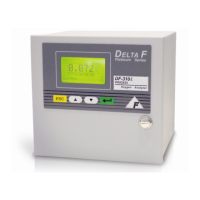42 DF-310E Sample Gas Preparation and Delivery
same during calibration and process monitoring.
Use the flow control valve on the regulator to meter the calibration gas to the
analyzer at the suggested 1.0 scfh flow. By leaving the analyzer’s flow
controls untouched from when the analyzer is used on process, the calibration
pressure duplicates the process sampling pressure.
6.5.5 Background Gas Effects on Calibration
6.5.5.1 Flow rate
Ideally, the calibration gas and the sample gas have the same gas composition,
and as a result, the indicated flow rate during calibration and process sampling
are identical. However, if the composition of the calibration and sample gases
are not the same, the flow rate indicated on the rotameter may need to be
adjusted. Light gases, such as H
2
and He, have a higher flow rate than is
indicated on the flowmeter. As a result, the flow rate of the light gas should
be set to one third of the flow specifications found in this manual. For
example: The recommended flow rate for N
2
is 1.0 scfh. In H
2
or He service,
the recommended flow rate (as indicated on the analyzer flowmeter) is 0.3
scfh.
6.5.5.2 Gas Scale Factor (GSF)
If possible, the background of the calibration gas should be the same as the
process sample gas. If not, a gas scale factor may have to be applied to the
calibration gas oxygen readings because of the difference between the
diffusion rate of oxygen in nitrogen (factory calibration gas) versus the
diffusion rate in the user’s calibration gas. The Sample Gas Preparation and
Delivery section discusses the proper setting of the gas scale factor option
during calibration as well as during process gas measurement.

